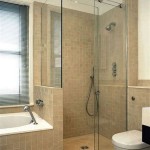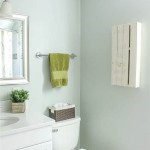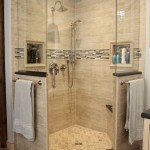Extractor Fan and Light Bathroom: A Comprehensive Guide
Bathrooms, due to their inherent humidity, require specific ventilation solutions. An extractor fan and light combination unit offers a practical and efficient way to manage moisture, prevent mold growth, and illuminate the space. This article explores the key aspects of selecting, installing, and maintaining these essential bathroom fixtures.
Understanding the Importance of Bathroom Ventilation
Bathrooms generate significant moisture from showering, bathing, and handwashing. Without adequate ventilation, this humidity can lead to condensation on surfaces, fostering the growth of mold and mildew. These fungi not only damage walls, ceilings, and fixtures but also pose health risks, particularly for individuals with respiratory sensitivities. An extractor fan effectively removes excess moisture, protecting the bathroom's structural integrity and promoting a healthier environment.
Extractor Fan and Light Combinations: Functionality and Benefits
Combining an extractor fan with a light fixture provides a convenient and space-saving solution for bathrooms. This integrated design simplifies installation and wiring, reducing the need for separate fixtures. The combined unit offers several advantages:
- Improved Air Quality: Efficiently removes steam and moisture, reducing the risk of mold and mildew.
- Odor Control: Helps eliminate unpleasant odors associated with bathroom use.
- Enhanced Lighting: Provides adequate illumination for daily bathroom tasks.
- Space Optimization: Consolidates two essential functions into a single unit.
- Simplified Installation: Requires only one electrical connection, streamlining the installation process.
Key Considerations When Choosing an Extractor Fan and Light
Selecting the appropriate extractor fan and light combination involves several critical factors:
- Extraction Rate: Measured in cubic feet per minute (CFM) or liters per second (l/s), the extraction rate indicates the fan's ability to remove air. Larger bathrooms or those with frequent use require higher CFM ratings.
- Noise Level: Extractor fans generate noise during operation. Look for models with lower sone ratings for quieter performance.
- Power Consumption: Consider the energy efficiency of the unit, opting for models with lower wattage for reduced electricity consumption.
- Lighting Technology: Choose between incandescent, halogen, LED, or fluorescent lighting options based on desired brightness, energy efficiency, and lifespan.
- IP Rating: The Ingress Protection (IP) rating indicates the unit's resistance to dust and moisture. Bathrooms require a minimum IP rating of IP44 for splash protection.
- Style and Design: Select a unit that complements the bathroom's aesthetic, considering factors such as color, finish, and size.
Installation Best Practices
Proper installation is crucial for optimal performance and safety. While professional installation is recommended, individuals with electrical experience can install these units following manufacturer instructions and local building codes. Key installation considerations include:
- Wiring: Ensure proper electrical connections and grounding to prevent electrical hazards.
- Ventilation Ducting: Connect the extractor fan to a suitable duct leading to the exterior of the building to exhaust moisture effectively.
- Positioning: Ideally, position the unit directly above the shower or bath for maximum moisture removal.
- Ceiling or Wall Mounting: Choose a model designed for the desired mounting location, ensuring proper support and sealing.
Maintenance and Care
Regular maintenance ensures the longevity and efficiency of the extractor fan and light unit. Key maintenance tasks include:
- Cleaning: Regularly clean the fan blades and light cover to remove dust and debris that can impede airflow and reduce light output.
- Lubrication: Some models require periodic lubrication of the motor. Consult the manufacturer's instructions for specific lubrication requirements.
- Bulb Replacement: Replace burnt-out light bulbs promptly with the correct type and wattage.
- Inspection: Periodically inspect the unit for any signs of damage or wear and tear, addressing any issues promptly to prevent further problems.
Regulations and Building Codes
Installation of extractor fans and lights is subject to local building codes and regulations. These codes often specify requirements for ventilation rates, wiring, and ductwork. Consult local building authorities to ensure compliance with all applicable regulations.
Choosing the Right Extractor Fan and Light for Your Bathroom
By carefully considering the factors outlined above, homeowners can select an extractor fan and light combination that effectively manages moisture, enhances lighting, and creates a healthier and more comfortable bathroom environment. Proper installation and regular maintenance will ensure the unit's optimal performance and longevity.

Bath Exhaust Ventilation Fans

How Powerful Should A Bathroom Extractor Fan Be I S Co

Manrose Ledslktc 4 Axial Inline Bathroom Shower Extractor Fan Kit With Led Light Timer Bright Chrome 240v

Hib Turbo Warm White Led Illuminated Inline Chrome Extractor Fan

Ventaxia Vent A Light Shower Fan

Hib Turbo White Bathroom Inline Fan With Led Lights Cool 32200

Bathroom Heater Light And Extractor Fan In One Unit White Bathroomhalo Bh A716fw Truerooms Com

Bathroom Ceiling Extractor Fan 100mm 4 With Square 12 W Led Lights Silver

Ceiling Extractor System With Low Voltage Led Light Fv160led Weiss

Eurolux C86w Bathroom Square 3 In 1 White Heater Light Extractor Buy Wynberg Lights
See Also







